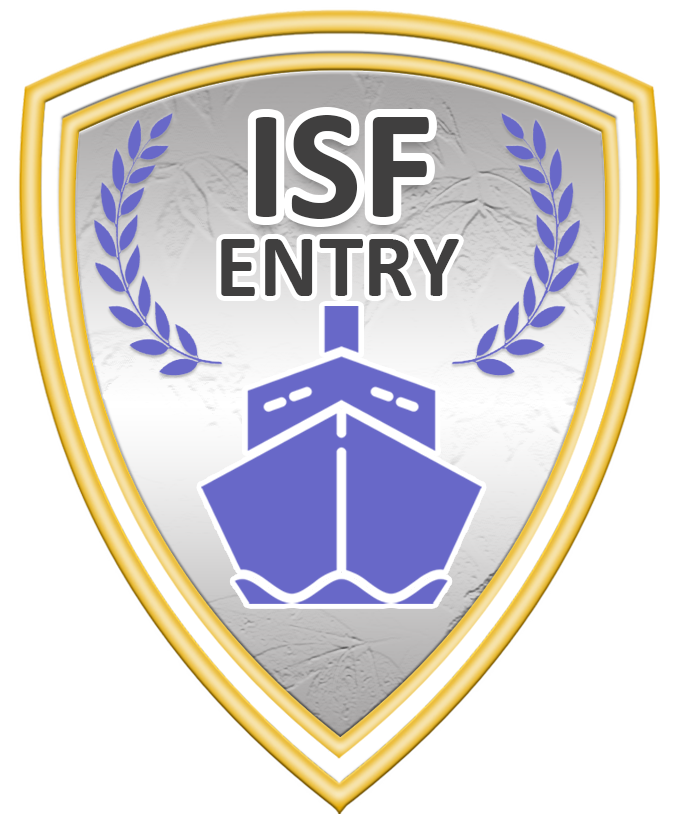ISF Filing For Hazmat Cargo: Visual Guide For Brokers
Are you confident that your ISF filing for hazmat cargo complies with U.S. Customs and Border Protection (CBP) rules and carrier restrictions every time?

What is ISF and why it matters for hazmat cargo
ISF stands for Importer Security Filing, a CBP requirement for most ocean imports to the United States. It is designed to provide advance cargo information to protect supply chain security, and when your cargo contains hazardous materials, the stakes for accurate and timely ISF increase significantly because of added safety, stowage and regulatory constraints.
Quick definitions you should know
You should be familiar with a few fundamental terms before you file. These include Importer of Record (IOR), consignee, HTSUS (Harmonized Tariff Schedule codes for the U.S.), UN numbers, proper shipping name, packing group, and Dangerous Goods Declaration (DGD).
Who is responsible for ISF filing and what you must provide
The Importer of Record (IOR) is legally responsible for ensuring the ISF is filed, but you can authorize a customs broker to file on your behalf. Even when the broker files, you remain responsible for ensuring accuracy and timeliness; you must furnish all necessary hazmat data and supporting documents promptly.
The 10 required ISF data elements (what you must collect)
You must provide these 10 data elements for an ISF submission. Items are listed so you can verify completeness before filing:
- Seller name and address (manufacturer/shipper when applicable).
- Buyer name and address.
- Importer of Record name and IRS/CBP-assigned number.
- Consignee name and address (or “To Order” as applicable).
- Manufacturer or supplier name and address (or “Manufacturer” entries).
- Country of origin for the commodity.
- HTSUS commodity classification number for each product line.
- Container stuffing location (where cargo was packed into the container).
- Consolidator or stuffer name and address (if applicable).
- Any additional data required by CBP at time of filing or specific to your shipment.
Additional hazardous materials information you must provide
Hazmat cargo requires specific, separate declarations and safety data. You should collect the following items from the shipper so the ISF and other filings are consistent:
- UN number and proper shipping name.
- Hazard class/division and packing group.
- Net quantity or weight and number of packages.
- Emergency contact telephone number and 24/7 availability.
- Marine pollutant status (if applicable).
- Declaration of Limited Quantity or Excepted Quantity when applicable.
- Special stowage and segregation requirements (e.g., away from foodstuffs, separation from oxidizers).
Why ISF accuracy is more critical for hazmat shipments
When hazmat is involved, inaccurate ISF data can trigger multi-level consequences such as cargo not being loaded, shipment holds at origin or destination, additional inspections, and potential fines. Accurate advance data enables carriers and port authorities to apply correct stowage and segregation protocols and prevents unsafe mixing of incompatible goods.
Step-by-step ISF filing process for hazmat cargo
Follow these steps to file ISF reliably for hazmat shipments:
- Gather complete commercial documents from the supplier and shipper, including the commercial invoice, packing list, bill of lading, and Dangerous Goods Declaration (DGD).
- Verify hazmat classification and UN number: confirm proper shipping name, class, and packing group with the material’s Safety Data Sheet (SDS) or manufacturer.
- Determine HTSUS classification for the imported commodity and confirm the country of origin.
- Confirm container stuffing location and consolidator/stuffer details if the cargo is LCL or part of a consolidated shipment.
- Validate consignee and Importer of Record details, including any CBP-assigned numbers (EIN, IRS number, or CBP importer number).
- Ensure shipping party communicates stowage requirements and marine pollutant declarations to the carrier.
- Submit ISF at least 24 hours prior to departure of the vessel from the foreign port of loading, using ACE or an authorized broker’s filing solution.
- Confirm carrier acceptance of hazmat for carriage; secure carrier hazmat booking confirmation and any carrier-specific hazmat paperwork.
- Monitor carrier and port messages and respond immediately to any hold, query, or amendment request.
- File amendments and corrections promptly if any of the 10 ISF elements change or if hazmat information must be updated.
Timing and deadlines — what you must meet
You must file the ISF no later than 24 hours before the cargo is laden aboard the vessel at the foreign port. For multi-leg shipments or transshipments, you must ensure the correct ISF is filed for each relevant inbound leg and that amendments are submitted when details change. Late filing or incomplete ISF entries are subject to enforcement actions and can impede carrier acceptance of hazardous material.
Filing systems and channels to use
Most ISF filings are transmitted through the Automated Commercial Environment (ACE) or via a customs broker using ACE-certified software or EDI solutions. You should ensure your electronic transmission includes both the required 10 data elements and consistent hazmat declarations where the platform supports additional notes or attachments.
How ISF interacts with the Dangerous Goods Declaration (DGD)
The ISF and DGD are separate but interdependent: ISF provides customs advance data while the DGD communicates the hazard specifics required by IMDG, carriers, and ports. You must confirm that the DGD information matches the ISF entries for commodity, weight, and counting units. Inconsistencies between ISF and DGD can result in carrier rejection, rework, or regulatory inquiries.
Common errors and pitfalls to avoid
You should avoid these common mistakes that frequently generate delays or fines:
- Missing or incorrect HTSUS numbers or country-of-origin entries.
- Incomplete or inconsistent consignee or importer numbers.
- Omitting container stuffing location details or providing an incorrect consolidator name.
- Failing to supply UN numbers, proper shipping names, or packing groups in situations where hazmat information should be referenced in the ISF.
- Late filing — submitting ISF after the 24-hour cutoff or providing incomplete data.
Amendments and how to handle corrections
If you discover an error after filing, you must amend the ISF immediately. Prompt amendments reduce the risk of enforcement action and prevent loading delays. Make sure to:
- Identify which ISF data element changed.
- Prepare and submit an ISF amendment through ACE or your broker’s platform.
- Notify the carrier and port authority if the change affects stowage, segregation or safety compliance.
- Document the reason for the amendment in your internal records to support potential future audits.

Edge cases: consolidated shipments and LCL with hazmat
Consolidated and LCL shipments present particular challenges for hazmat cargo. You should:
- Ensure the consolidator provides accurate house bill of lading details and that the ISF contains the correct consolidator name and address.
- Confirm acceptance policies of carriers and terminals for LCL hazmat; some ports or terminals will refuse certain classes or require special segregation.
- If multiple shippers feed a consolidation, require each shipper to supply full hazmat declarations and ensure your consolidator compiles a manifest that identifies each house piece with its UN number and DG class.
Edge cases: bulk liquids, breakbulk and non-containerized hazmat
Non-containerized hazmat such as bulk liquid tankers, breakbulk drums, or roll-on/roll-off shipments follow different stowage rules and may require additional maritime documentation. You must:
- Confirm vessel-specific acceptance criteria and tank cleaning certificates when required.
- Supply accurate weight and volume calculations and align those with the ISF HTSUS entries.
- Obtain and supply segregation plans and terminal instructions to avoid incompatible materials being stowed together.
Edge cases: transshipment, transload, and change of mode
When cargo transships or transloads, you must track and update the ISF data as necessary. Your responsibilities include:
- Ensuring ISF covers the U.S.-bound voyage leg even if carried through an intermediate port.
- Preparing amendments for any change in vessel, voyage number, or carrier if that affects the 24-hour filing timeline.
- Communicating with inland carriers and terminals to confirm hazmat stowage and handling compliance during transload operations.
Carrier, terminal and port considerations for hazmat ISF shipments
Carriers and terminals have independent rules about the acceptance and stowage of hazardous materials. You should:
- Verify carrier acceptance confirmations and any special booking conditions for hazmat.
- Confirm terminal slotting, stowage limitations, and whether the terminal requires advance notification or extra documentation.
- Understand that carriers may refuse to accept cargo for export if ISF or hazmat documentation is incomplete or inconsistent.
Compliance tips to reduce risk and speed clearance
Use these practical measures to strengthen compliance and reduce the chance of delays:
- Standardize your information intake forms to gather all ISF and hazmat elements at origin.
- Validate UN numbers, proper shipping names, and packing group using SDS and IMDG references before you accept booking.
- Use a reputable customs broker experienced in hazmat filings and ask for a compliance review on high-risk shipments.
- Implement a two-step verification process internally: one person assembles the data, another reviews it before submission.
- Keep a rigorous document retention policy for all ISF, DGD and communication records to support audits.
Visual checklist: ISF for hazmat — pre-filing
Use this checklist to confirm you have everything ready before ISF submission:
- Commercial invoice and packing list received and reconciled.
- HTSUS number identified for each product line.
- Country of origin confirmed for each commodity.
- Vendor/manufacturer and buyer names and addresses available.
- Importer of Record name and number confirmed.
- Consignee name and address and any consignee numbers ready.
- Container stuffing location and consolidator name captured.
- Complete DG declarations, UN numbers, packing groups, and net quantities collected.
- Emergency contact and stowage information included from shipper.
- Carrier acceptance and booking confirmation received.
How to manage a late ISF or refused hazmat booking
If ISF is filed late or a carrier refuses hazmat acceptance, act quickly to mitigate consequences. You should:
- Notify the carrier and port immediately to understand the impact and any rerouting options.
- File an ISF amendment promptly if new data or corrections can resolve the issue.
- Prepare to reclassify or repack cargo if the carrier’s acceptance criteria require certain packaging updates.
- Keep stakeholders informed — consignee, IOR, and insurance providers — so contingency plans can be enacted.
Documentation retention and audit preparedness
You should maintain robust records for all ISF filings, DGDs, commercial invoices, packing lists, and correspondence. CBP can audit or query ISF filings; having well-organized records reduces risk in audits and simplifies responses to RFI (Requests for Information).
Technology and automation: how to streamline filings
Automating ISF input and cross-referencing hazmat data reduces human error. You should:
- Use ACE-certified EDI or portal systems that integrate with your WMS and TMS for automatic population of HTS, weights, and product IDs.
- Maintain an internal master database of product classifications, including UN numbers and HTSUS numbers, to avoid re-keying errors.
- Set automated alerts for missing ISF fields or when an amendment is required.
Training and internal controls for hazmat ISF compliance
Training is one of the most cost-effective risk mitigators. You should:
- Provide role-based training for staff responsible for packing, documentation, and ISF filing.
- Create SOPs that require cross-checks between DG declarations, invoices, and ISF entries.
- Run periodic mock audits to ensure your team can quickly identify and correct ISF inconsistencies.
Penalties and enforcement risks you should be aware of
Non-compliance can lead to serious consequences, including civil penalties, cargo holds, re-inspections, or, in severe cases, seizure. You should understand that penalties are assessed per violation and can be costly in both fines and operational delays; maintaining accurate ISF records and timely filings is the best prevention.
Communication best practices between stakeholders
Clear, documented communication between shipper, consolidator, broker, carrier, and consignee reduces errors. You should:
- Use standardized forms and data templates.
- Require confirmations for critical items such as UN number and packing group.
- Log all communications related to acceptance or restriction of hazmat cargo for audit trails.
Frequently asked questions (FAQs)
Q: Can a broker file ISF for hazmat cargo on your behalf? A: Yes, a broker can file ISF if authorized, but you remain responsible for ensuring accuracy and timeliness. Provide complete and validated hazmat data to the broker before filing.
Q: What if the shipper supplies an incorrect UN number? A: Request a corrected Dangerous Goods Declaration immediately and file an ISF amendment. Do not allow the cargo to be shipped or accepted by carrier without corrected documentation.
Q: Are there classes of hazardous materials that carriers commonly refuse? A: Carriers and terminals may restrict certain classes, such as Class 1 (explosives) or high-risk toxic gases, depending on vessel type and route. Always confirm carrier acceptance prior to booking.
Q: How should you manage shipments that are both hazmat and temperature-controlled? A: Coordinate both hazard stowage and temperature control requirements. Provide explicit instructions to the carrier and port about stowage priority and monitoring to avoid conflicting handling requirements.
Sample internal SOP for ISF hazmat handling
Below is a condensed SOP you can adapt to your operations. Each step should have assigned owners and timeframes:
- Receive order and pre-validate product classification; owner: sourcing or compliance team.
- Request and receive SDS and DGD from vendor; owner: shipment coordinator.
- Assign HTSUS and country-of-origin for each SKU; owner: tariff specialist.
- Confirm container stuffing location and consolidator; owner: logistics planner.
- Validate consignee and importer numbers; owner: customs broker liaison.
- Submit ISF at least 24 hours prior to vessel departure; owner: broker or filings team.
- Confirm carrier hazmat acceptance and booking; owner: carrier liaison.
- Monitor for carrier/port queries and file amendments within agreed SLAs; owner: filings team.
- Archive all documentation and maintain audit log; owner: compliance.
Final checklist before you release cargo to carrier
Use this final checklist as your release authorization:
- ISF filed and confirmed with ACE or broker.
- DGD matches ISF and commercial documents.
- Carrier booking confirmed with hazmat acceptance noted.
- Terminal/port requirements verified for hazmat stowage.
- Emergency contact and handling procedures included.
- Internal approvals and checks completed and documented.
Closing recommendations for maintaining compliance and efficiency
You should create an integrated process that aligns product classification, DG declarations, and ISF submissions. Standardize data flows, train personnel, and invest in systems that reduce manual entry and provide audit trails. When you treat ISF for hazmat cargo as a coordinated compliance and safety operation rather than a single administrative step, you will reduce risk, protect operations, and improve speed to market.
If you would like, I can provide a customizable ISF-for-hazmat checklist template or walk you through mapping your current operational workflows to the steps above so you can identify immediate process improvements.
